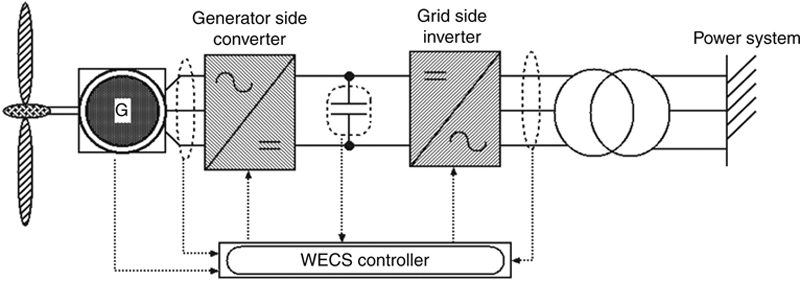References
[1] Howlader AM, Urasaki N, Yona A, Senjyu T, Saber AY, et al. Review of output power smoothing methods for wind energy conversion. Renew Sust Energ Rev. 2013;26:135–146.
[2] Howlader AM, Senjyu T, Saber AY, et al. An integrated power smoothing control for a grid-interactive wind farm considering wake effects. IEEE Syst J. 2014;9(3):1–12.
[3] Howlader AM, Urasaki N, Yona A, Senjyu T, Saber AY, et al. Control strategies for wind farm based smart grid system. In: IEEE 10th International Conference on the Power Electronics and Drive Systems. KitaKyushu, Japan; 2013.
[4] Ferrari ML, Traverso A, Pascenti M, Massardo AF, et al. Plant management tools tested with a small-scale distributed generation laboratory. Energ Convers Manage. 2014;78:105–113.
[5] Howlader HOR, Matayoshi H, Senjyu T, et al. Distributed generation incorporated with the thermal generation for optimum operation of a smart grid considering forecast error. Energ Convers Manage. 2014;96:303–314.
[6] El-Khattam W, Salama MMA. Distributed generation technologies, definitions, and benefits. Electr Pow Syst Res. 2004;71:119–128.
[7] Barker, PP, de Mello, RW. Determining the impact of distributed generation on power systems. I. Radial distribution systems, IEEE Power Engineering Society Summer Meeting, Seattle, WA; 2000.
[8] Ackerman T, Anderson G, Soder L, et al. Distributed generation: a definition. Electr Pow Syst Res. 2001;57:195–204.
[9] El-Khattam W, Salama MMA, et al. Distributed generation technologies, definitions and benefits. Electr Pow Syst Res. 2004;71:119–128.
[10] IEEE Smart Grid. Integrating distributed generation into the smarter grid, http://smartgrid.ieee.org/december-2013/1013-integrating-distributed-generation-into-the-smarter-grid.
[11] Akorede MF, Hizam H, Pouresmaeil E, et al. Distributed energy resources and benefits to the environment. Renew Sust Energ Rev. 2010;14(2):724–734.
[12] Urasaki N, Howlader AM, Senjyu T, Funabashi T, Saber AY, et al. High efficiency drive for micro-turbine generator based on current phase and revolving speed optimizations. Int J Emerg Elec Power Syst. 2011;12(5).
[13] Howlader AM, Urasaki N, Yona A, Senjyu T, Saber AY, et al. Design and implement a digital H∞ robust controller for a MW-class PMSG-based grid-interactive wind energy conversion system. Energies. 2013;6(4):2084–2109.
[14] Fthenakis V, Kim HC, et al. Land use and electricity generation: a life-cycle analysis. Renew Sust Energ Rev. 2009;13(6–7):1465–1476.
[15] World Wind Energy Association (WWEA). http://www.wwindea.org/home/index.php.
[16] Volk TA, Abrahamson LP, White EH, Neuhauser E, Gray E, Demeter C, Lindsey C, Jarnefeld J, Aneshansley DJ, Pellerin R, Edick S, et al. Developing a willow biomass crop enterprise for Bio-energy and Bio-products in the United States. Proceedings of Bioenergy 2000. Adam’s Mark Hotel, Buffalo, New York, USA; 2000.
[17] Fridleifsson IB, et al. Geothermal energy for the benefit of the people. Renew Sust Energ Rev. 2001;5:299–312.
[18] Rafik F, Gualous H, Gallay R, Crausaz A, Berthon A, et al. Frequency thermal and voltage super capacitor characterization and modelling. J Power Sources. 2007;165:928–934.
[19] Sharma P, Bhatti TS, et al. A review on electrochemical double-layer capacitors. Energ Convers Manage. 2010;51:2901–2912.
[20] Schneuwly A., et al. Ultacapacitors, the new thinking in automotive world, http://www.maxwell.com.
[21] Kusko A, Dedad J, et al. Short-term and long-term energy storage methods for standby electric power systems. IEEE Ind Appl Mag. 2007;13:66–72.
[22] Rabiee A, Khorram H, Aghaei J, et al. A review of energy storage systems in microgrids with wind turbines. Renew Sust Energ Rev. 2013;18:316–326.
[23] Diaz-Gonzalez F, Sumper A, Gomis-Bellmunt O, Villafafila-Robles R, et al. A review of energy storage technologies for wind power applications. Renew Sust Energ Rev. 2012;16:2154–2171.
[24] Nielsen KE, Molinas M, et al. Superconducting magnetic energy storage (SMES) in power systems with renewable energy sources. In: IEEE international symposium on industrial electronics; 2010, pp. 2487–2492.
[25] What is smart grid. https://www.smartgrid.gov/the_smart_grid.
[26] International Energy Agency (IEA). Technology Road Map, http://www.iea.org/.
[27] Jarventausta P, Repo S, Rautiainen A, Partanen J, et al. Smart grid power system control in distributed generation environment. Ann Rev Control. 2010;34(2):277–286.





